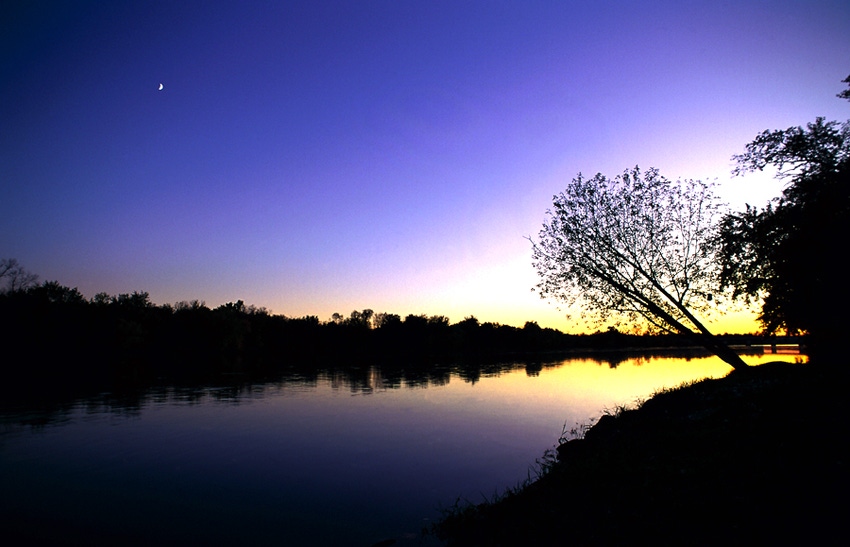
Last week the United States Court of Appeals 7th Circuit handed down a decision which should cause shame and embarrassment at the U.S. Department of Agriculture.
A three-judge panel reviewed an NRCS wetlands case and asked, “Did the USDA examine relevant factors and relevant data or articulate a satisfactory explanation for its action including a rational connection between the facts found and the choice made?...Did the agency evaluate the significance -or lack of significance- of any new information presented during the agency appeals process? The answers to all of these questions are no.”
A blistering 47-page analysis by a U.S. Court of Appeals judge goes on to discuss a case which started in 1987. Ronald Reagan was president and cell phones were just being adopted by consumers. And the original farm owner is now long gone, but that didn’t stop the government from digging in its heels despite overwhelming evidence.
What happened
The case involves the Boucher farm in Hancock County, Ind. In late 1987, Mr. Boucher received a USDA notice that his farm contained wetlands even though a national wetland inventory taken later in 1989 did not identify any wetlands on Mr. Boucher’s farm.
This case involves the removal of nine trees by Mr. Boucher. The nine trees covered 12/10,000ths of an acre.
USDA told Mr. Boucher that he had a potential wetland violation based on the tree removal. An NRCS employee found that Mr. Boucher’s property had been drained through the installation of tile, which turned out later to be a lie by an NRCS staffer. The NRCS employee also believed because Mr. Boucher’s land had been farmed, she needed an offsite comparison field to compare with the Boucher farm. She chose an unfarmed area in a depression which was “indisputably” a wetland.
The Court opinion points out that at this point her assessment would not even have made it through a first level review. But it did!
Mr. Boucher pointed out the nine trees he removed were upland plants and were not likely to be found in wetlands. By February 2003, Mr. Boucher received a notice from NRCS demanding he plant 300 trees per acre for 2.8 acres of alleged converted wetland.
Mr. Boucher then informed the local Farm Services Agency (FSA) committee that the only trees he removed were not wetland plants. Mr. Boucher met with the Indiana state conservationist on September 9, 2003.
Mr. Boucher left this meeting believing he had proved his point.
Case closed? Not really
Thus, for 10 years there was no communication from USDA -- until late 2012.
In February 2004, Mr. Boucher passed away. His widow, Rita Boucher, took over the farm. In 2012 a new tenant wanted to remove an old house and barn on the property. Mrs. Boucher sought permission from USDA to do so. In 2012, NRCS claimed it had never made a final decision after Mr. Boucher met with the Indiana state conservationist in 2003.
So, NRCS experts again visited the farm on January 13 and 14, 2013, when over three inches of rain fell on the farm causing 11 inches of snow to melt on the ground. In another “stupid” decision, NRCS claimed there were puddles in several fields. Experts used the same comparison field as in the 2002 assessment and determined there must be tile under Mrs. Boucher’s field. (There was none.)
Finally, in March 2013, USDA notified Mrs. Boucher that she had wetlands and that she could appeal determination to USDA’s National Appeal Division. Mrs. Boucher appealed because she could not believe the removal of nine trees, nearly three decades earlier, impacted her farmland.
Mrs. Boucher submitted evidence to Administrative Law Judge that her farm “…1) did not appear to have any drainage tiling; 2) to the extent they did have any tiling, the tiles were installed before 1985; 3) did not demonstrate inundation or saturation with water; 4) were not in a depression; and 5) previously had trees that were not hydrophytic.”
NRCS claimed the nine trees had altered the hydrology of the site. The Court notes sarcastically on each of these points that anyone with “common sense” and a sliver of understanding of agriculture would have concluded this case at this point.
The Court slammed the USDA hearing officer, claiming that “Rather than grappling with this evidence, the hearing officer used transparently circular logic, asserting that the Agency experts had appropriately found hydric soils, hydrophytic vegetation, and wetland hydrology…”
In 47 pages, the U.S. Court of Appeals ridicules and suggests NRCS agents did not tell the truth and that NRCS experts are either willing to lie or simply do not know what they are doing.
Existing leadership at the USDA should read this damning decision carefully and make changes accordingly. This case undermines faith in the honesty of USDA. Mrs. Rita Boucher was told by the Court she should be awarded all appropriate relief to which we should all say Amen!
The opinions of the author are not necessarily those of Farm Futures or Farm Progress.
About the Author(s)
You May Also Like




